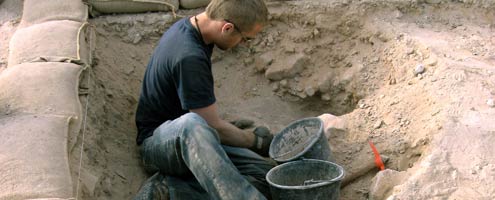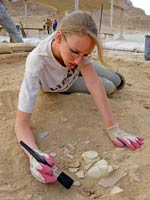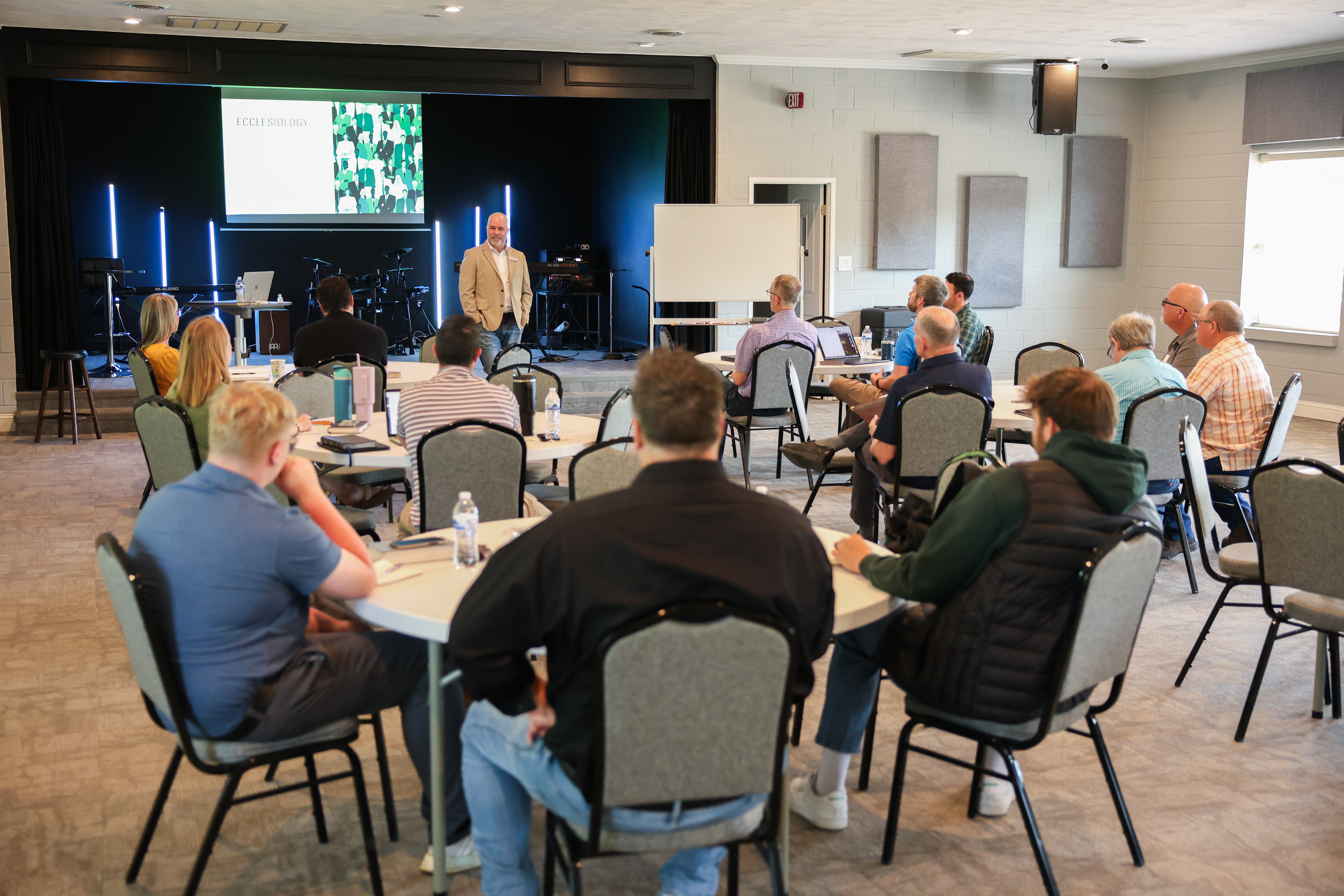Search News Archives
Filter News Articles
Additional Navigation
Archaeology course takes students to Dead Sea site
December 12, 2008 : By University Advancement Staff

Four Liberty University students started working as “archaeologists in training” in Israel on Dec. 5 under the supervision of Dr. Randall Price, Director of Excavations and Executive Director of LU’s new Center for Judaic Studies.
Students Nathan LeMaster, David Sherret, Katelyn Thurston and Emilee Price traveled with Price and his wife, Beverlee, to learn about and perform land excavations at the 2,000-year-old remains of the historic Qumran Plateau, a site situated beside the Dead Sea, as part of an LU Field Archaeology course that continues through Dec. 23.
 Liberty’s group is part of a larger team that is now in its sixth season (2002-08) uncovering the ruins of the Qumran Community, believed to have once been inhabited by a Jewish sect that held a strict interpretation of the Scriptures and looked for the coming of the Messiah and the end of the age.
Liberty’s group is part of a larger team that is now in its sixth season (2002-08) uncovering the ruins of the Qumran Community, believed to have once been inhabited by a Jewish sect that held a strict interpretation of the Scriptures and looked for the coming of the Messiah and the end of the age.
Most scholars believe this community produced and preserved the famous Dead Sea Scrolls, many of which were hidden in caves carved in the plateau where the students are digging. These scrolls contain the oldest known copies of the Old Testament and record many historical events and beliefs of Judaism as it existed during the time of Jesus and the formation of the early church.
The excavations this first week have uncovered a large number of ancient potteries from the Roman period (the time of Jesus) as well as several places where the ancient community worked and cooked their meals.
On Saturday, students will go to Bethlehem to tour the place of Jesus’ birth and the city of Jerusalem where the Lord died, rose and has promised to return.
They will also have an exclusive tour of the latest excavations at the Herodium, where the tomb of King Herod was recently discovered by one of the archaeologists with whom the LU team is working, and will visit a private antiquities collector in Jerusalem who will show them his exceptional exhibition of artifacts from 5,000 years of biblical history.
Next week the students’ work will focus on getting to the lower levels of habitation during the Hasmonean era (about 100 years before the birth of Christ) in order to explore the beginnings of the Qumran Community. Here it is expected that much more pottery and some coins will be found, as well as animal bone deposits stored within jars — a unique ritual that occurred only at this site and which has yet to be fully explained.


